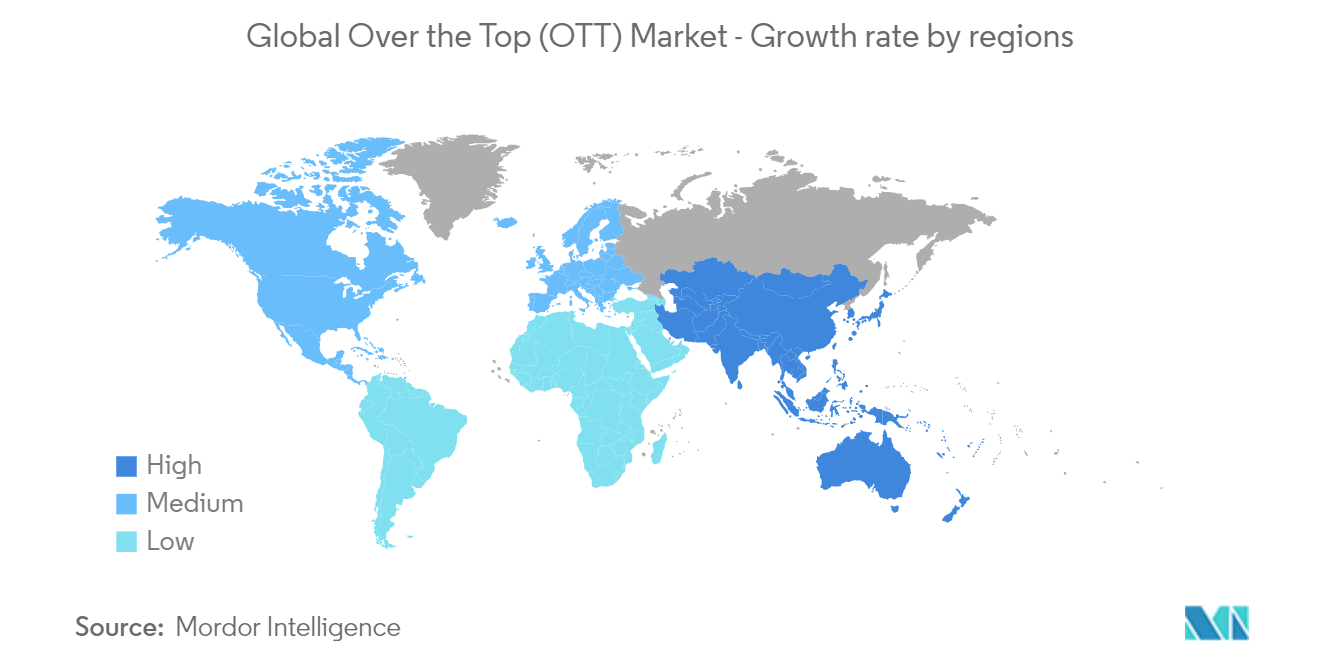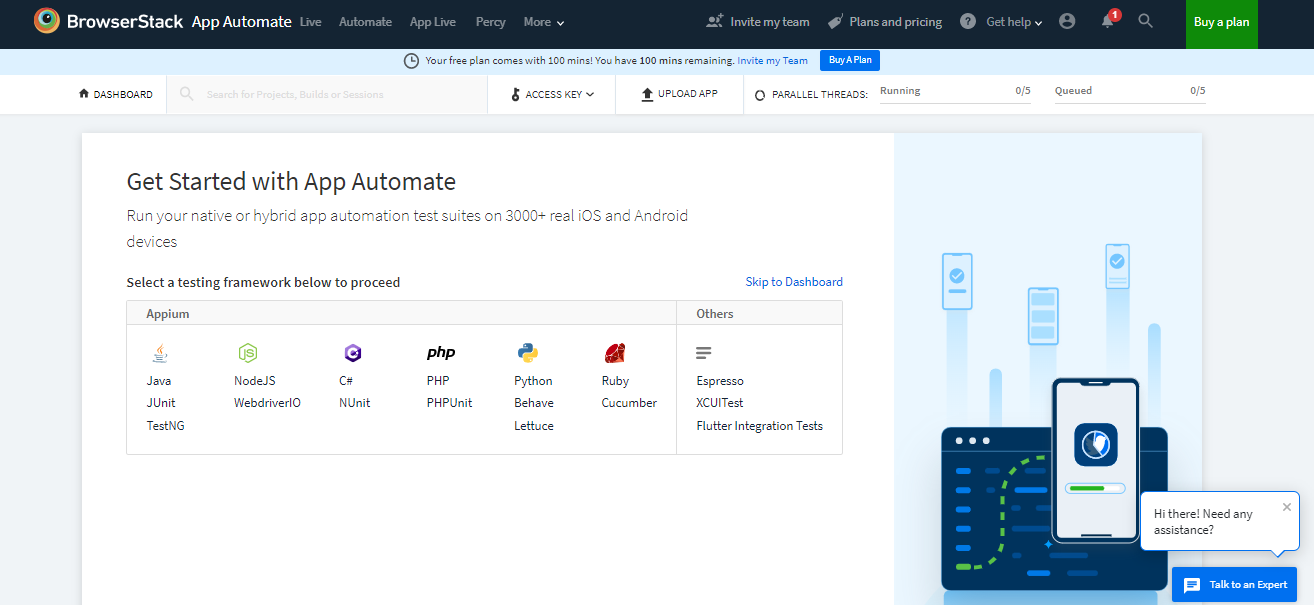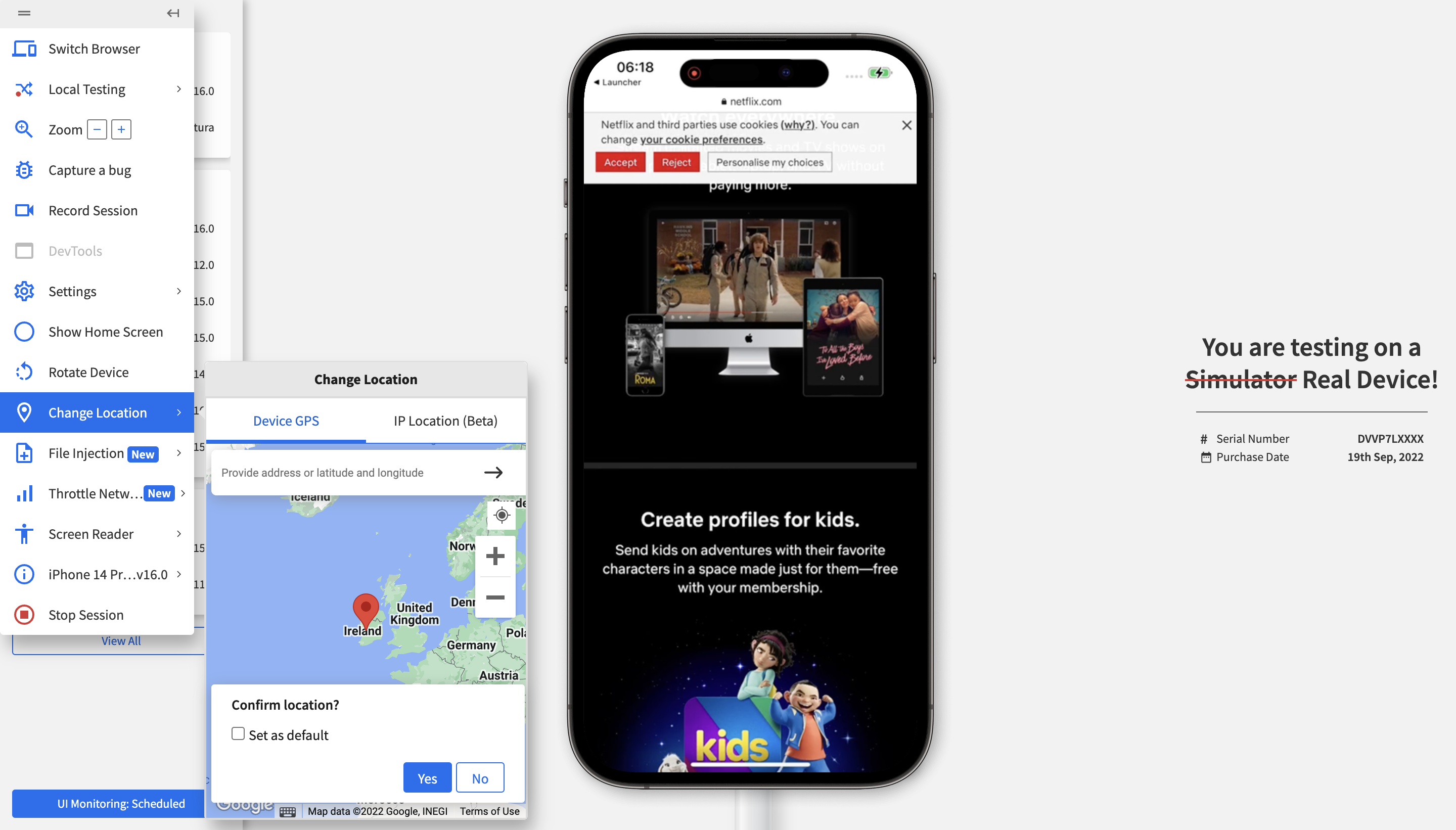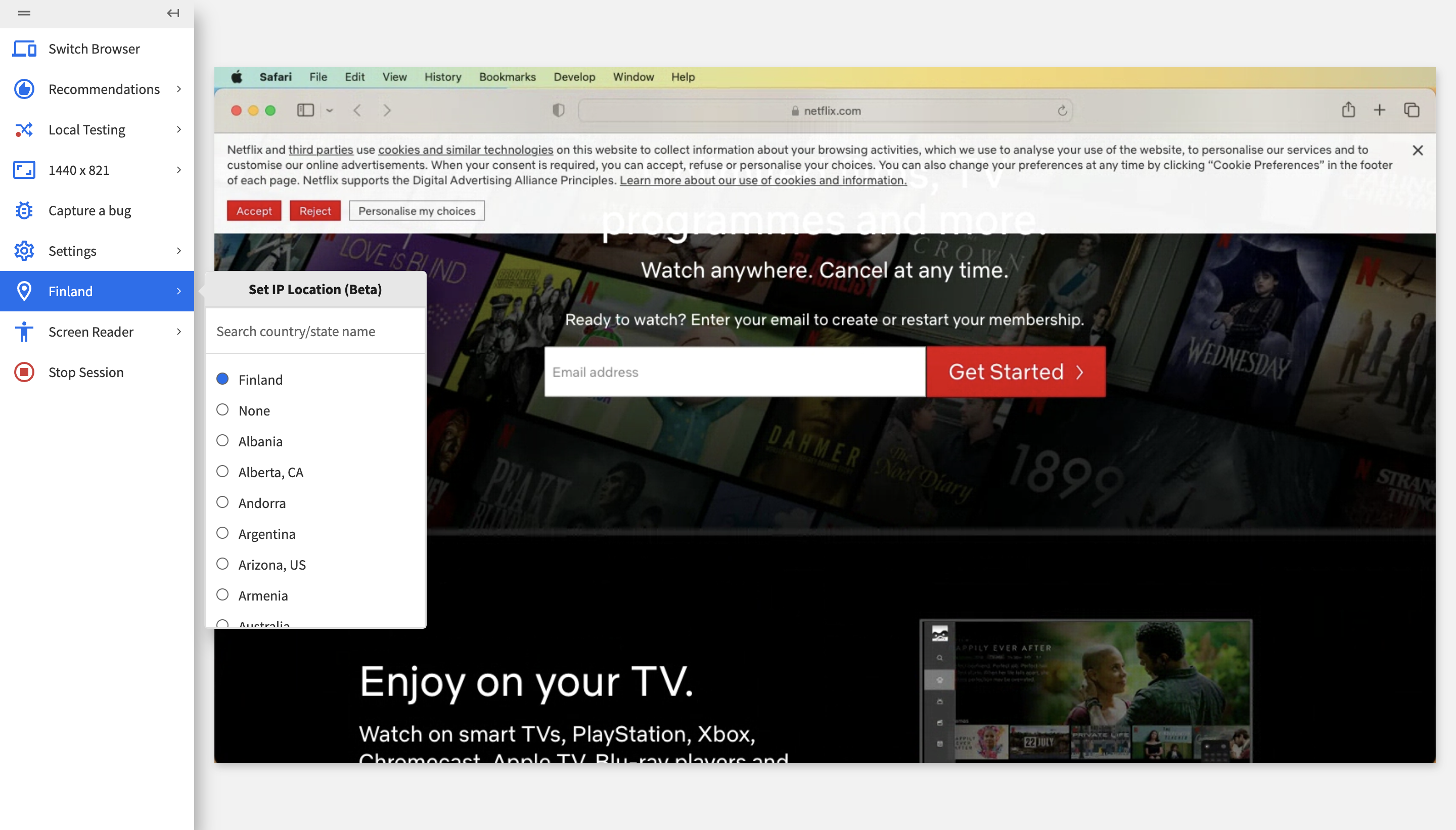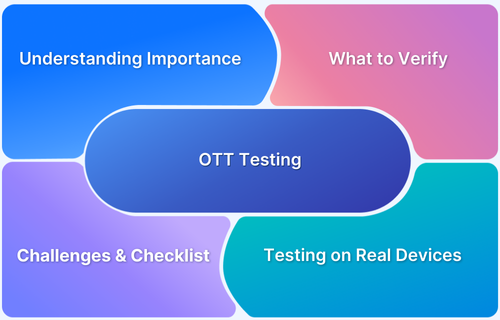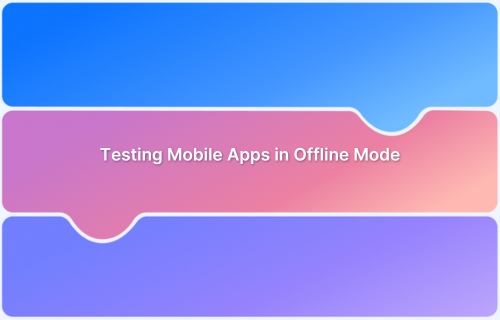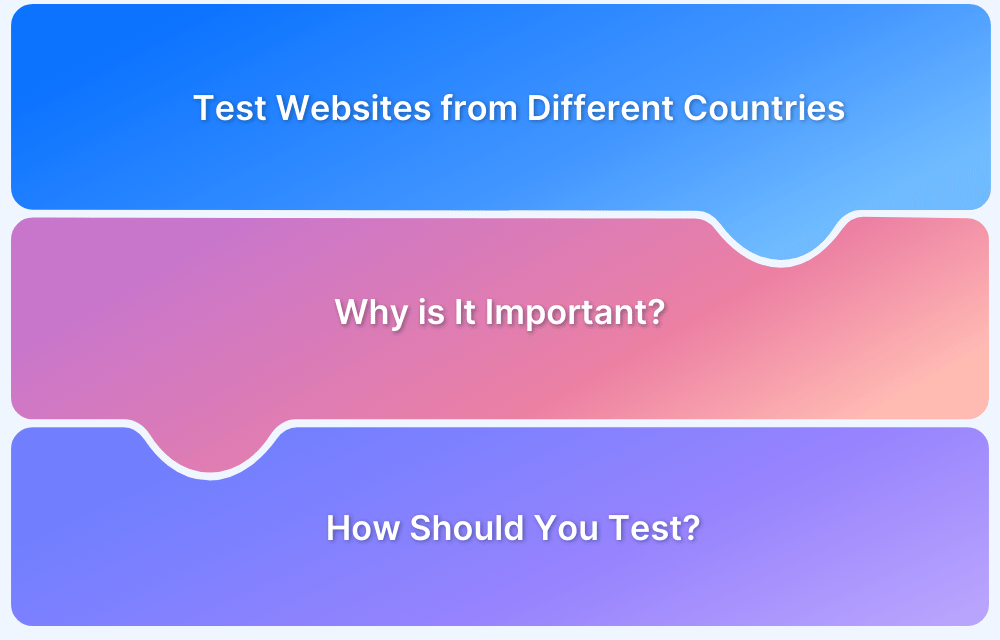Manually testing factors like video quality, buffering times, and cross-device compatibility can take time and effort, especially with the wide range of devices and network conditions users encounter.
Automating video streaming tests allows teams to efficiently simulate various scenarios, like fluctuating internet speeds and different device types, to ensure the content plays smoothly.
This approach speeds up the testing process, improves accuracy, and helps deliver a consistent, high-quality experience for users across different platforms.
This article explores how automation can be applied to video streaming testing, making it easier to maintain quality and meet the demands of modern streaming platforms.
What is Video Streaming?
Video streaming is a technology that enables users of Internet-linked devices to view audio-visual content with zero requirements to download it to their devices. Streaming enables video files to be transmitted to a web browser and play the video in real-time. without saving it locally.
The Competitive Landscape of Video Streaming
- The market is fragmented and comes with OTT challenges, such as countless content and media companies leaping onto the streaming TV bandwagon.
- The global market is becoming progressively hyper-competitive, creating the need for better quality content to keep customers hooked.
- The focus is on product advancement and innovation to gain visitors’ attention.
- Key players are Amazon, Netflix Inc., Spotify, Disney+ Hotstar, Apple TV, Roku, etc.
The Principles of Livestreaming Videos
Seven tips to make the most of live video for engaging a viewer with correct action.
- Keep it Simple: Live streaming does not have to be expensive or complex; loads of free services will fulfill your requirements.
- Thin-slice the Viewers: Incredibly few brands will be able to produce content that has mass appeal. If you wish to take benefit of FOMO (that speedily escalating outbreak: fear of missing out), create psychographically centric content.
- Pick Your Team: A development in-house team may assist you if you wish to build and manage an app for the extended term. This approach is appropriate in terms of having a sufficient budget.
- Choose a CDN (Content Delivery Network): It is a must-have action if you wish to build a live-streaming app. Even if you think you don’t need it, you must also pay for CDN. It will make sure flawless content delivery with zero interruptions.
- Appealing UI/UX Design: Remember that appearance means a lot, and the audience will judge your video streaming service as per their first impression. So you must find an experienced software development company or hire highly-skilled UI/UX designers that offer all solutions on a turnkey basis.
- Testing Is Vital: The audience won’t forgive your errors as today’s market proffers a lot of substitutes. A user will find something more consistent and reliable if something works inappropriately. Your live streaming app’s QA (quality assurance) should be flawlessly performed.
To keep users happy, sites/ apps that stream video require ensuring higher speed and performance. But, in reality, video streaming often slows down, resulting in a negative user experience.
BrowserStack SpeedLab can be an outstanding choice for video streaming tests as you can assess the quality of video streaming (for SLA compliance purposes, etc.) and allow the operator to promptly identify and remedy glitches affecting video delivery.
Why Automate a Video Streaming Test?
Video Streaming test platforms offer significant benefits to users, But there are many noteworthy challenges in testing these platforms manually. Browserstack Automate helps agile teams test for quality at scale by overcoming the following challenges:
- With Automate, you can scale as your test grows without being concerned about updating versions, managing capacity, adding devices, and, most importantly, managing stability.
- The automated video streaming test feature is perfectly designed to assess video streaming quality on real-time gadgets connected over Wi-Fi/2G/3G/4G/5G networks by evaluating key performance parameters for video QoE such as Load Time, Launch Time, Total Video Play Time, and Stalled Time.
- OTT applications can also be tested from a range of browsers.
- Platforms can conduct video quality and functional testing in an automated, continuous manner.
- To ensure their compatibility across different browsers, it is critical to perform cross-browser testing on OTT/ Video Streaming apps.
- While automating video stream tests, one can scale the complete testing process without requiring more QA engineers in the team.
Achieve More with Smart TV Test Automation on BrowserStack
Smart TV test automation enables comprehensive testing for:
- App features and functionality
- Device and browser compatibility
- Seamless performance and user experience
- Content diversity and accessibility
- Personalized recommendations and content suggestions
With BrowserStack, teams can eliminate the complexity of setting up and maintaining a Smart TV testing grid, ensuring faster and more efficient test execution.
How to Automate Video Streaming Testing [With Example]
Automating video streaming testing involves simulating real-world conditions to ensure that video content plays smoothly across different devices, network conditions, and environments. This process combines tools, scripting, and testing strategies to mimic various user scenarios effectively.
Key Steps to Automate Video Streaming Testing:
1. Define Test Scenarios:
Begin by identifying the essential elements of video streaming that need to be tested. These could include video playback, buffering times, resolution changes, network fluctuations, device compatibility, and adaptive bitrate streaming. It’s also important to consider different user behaviors and network conditions like high latency, low bandwidth, or varying devices (e.g., mobile vs. desktop).
2. Choose Automation Tools:
Choose efficient tools like Selenium, Cypress, Appium, Jmeter, BrowserStack Automate etc. to help automate video streaming tests correctly.
3. Simulate Real-World Conditions:
To test how a video stream holds up under various circumstances, automate tests under realistic conditions:
- Network Variability: Tools like Network Link Conditioner or WANem allow you to simulate conditions like bandwidth throttling, high latency, and packet loss. This ensures that the stream performs well under less-than-ideal network environments.
- Device Diversity: It’s crucial to test across multiple devices, screen sizes, and operating systems to validate consistent functionality. Tools like BrowserStack let you automate tests on a wide range of devices via real device cloud.
4. Monitor Key Metrics:
Automation can help track key performance metrics in real-time, such as:
- Startup Time: The time it takes for a video to start playing after being clicked.
- Buffering: Track and log buffering events, including how often they occur and how long they last.
- Resolution Changes: Verify that the video adjusts its resolution smoothly in response to network changes (adaptive bitrate streaming).
- Error Handling: Test for issues like playback failures, format mismatches, or compatibility problems with different devices.
Read More: Bug vs Error: Key Differences
- Audio-Video Sync: Ensure that the video and audio stay in sync, which is crucial for a positive user experience.
Example: Automating Video Streaming Test with Selenium
Here’s a basic example of automating a video streaming test using Selenium and Python. This script checks whether the video starts playing after clicking the play button on a streaming platform:
from selenium.webdriver.chrome.service import Service
from selenium import webdriver
from selenium.webdriver.common.by import By
from selenium.webdriver.chrome.options import Options
import time
# Set up the WebDriver with headless mode for testing in CI/CD environments
chrome_options = Options()
chrome_options.add_argument("--headless") # Optional: Runs the browser without a UI
service = Service(executable_path='/path/to/chromedriver') # Specify path to chromedriver
driver = webdriver.Chrome(service=service, options=chrome_options)
# Open the streaming site
driver.get("https://www.example.com/streaming-page")
# Wait for the page to load
time.sleep(3)
# Find and click on the video play button
play_button = driver.find_element(By.CSS_SELECTOR, "button.play")
play_button.click()
# Wait for a few seconds to allow the video to start playing
time.sleep(10)
# Check if the video is playing
video = driver.find_element(By.TAG_NAME, "video")
if video.is_displayed() and video.get_attribute("paused") == "false":
print("Video is playing successfully.")
else:
print("Video did not start properly.")
# Close the browser
driver.quit()In this script, we open a streaming site, click the play button, wait a few seconds, and then check if the video starts playing. This is a simple example, but you can expand it to handle more complex scenarios like simulating network speed changes or verifying video quality adjustments based on varying conditions.
By automating these tests, you can quickly validate streaming functionality across various scenarios and ensure a smooth, uninterrupted user experience.
Key Performance Indicators (KPIs) to Monitor
When automating video streaming testing, it’s essential to monitor specific Key Performance Indicators (KPIs) to ensure optimal user experience and performance. These KPIs help identify issues related to video quality, playback, and delivery. Here’s a breakdown of the most critical KPIs to monitor:
- Startup Time (Initial Buffering Time): Startup time is the time taken for a video to start playing after the user hits the play button. A fast startup time is crucial for user satisfaction as delays can lead to frustration and abandonment.
How to measure: Track the time between when the play button is clicked and when the video starts. Aim for a startup time of 2-3 seconds or less. - Buffering Ratio: It is the percentage of total playback time where the video is paused to buffer. Frequent or prolonged buffering negatively impacts the user experience.
How to measure: Track how often and for how long the video buffers during playback. Keep the buffering ratio as low as possible, ideally under 2%. - Rebuffering Events: It is the number of times the video pauses to re-buffer during playback. Rebuffering disrupts the viewing experience, leading to user frustration.
How to measure: Count the number of times the video pauses to load data during playback. Ideally, there should be no rebuffering events, although occasional buffering may occur briefly. - Resolution Changes (Adaptive Bitrate Switching): It is the ability of the video to adjust its resolution based on network conditions. Smooth resolution switching ensures uninterrupted playback, even when network speeds fluctuate.
How to measure: Monitor how often and smoothly the resolution changes during playback, especially when network conditions fluctuate. Ensure smooth transitions between resolutions with minimal impact on the viewing experience. - Video Quality: It refers to the visual and audio quality of the streamed video. Poor quality (e.g., pixelation, stuttering, or audio issues) can significantly harm the user experience.
How to measure: Use objective metrics like bitrate, resolution, and compression artifacts, along with subjective assessments (e.g., visual inspection for pixelation, stuttering, or audio sync issues). Ensure the video is free from visual artifacts and the audio is clear and synchronized. - Latency: It refers to the time delay between a user’s action (e.g., clicking play) and the video starts. High latency can be particularly problematic for live events or interactive streaming services.
How to measure: Measure the time from user interaction to video playback, considering both server-side and network latencies. Minimize latency, ideally under 1-2 seconds for video-on-demand services and under 1 second for real-time streaming. - Throughput (Bandwidth Utilization): It refers to the amount of data transferred during video streaming. Proper throughput ensures smooth playback without interruptions. Network congestion or insufficient bandwidth can cause buffering or resolution drops.
How to measure: Monitor the data transferred during video playback and watch for spikes or drops that could affect quality. Maintain consistent throughput that aligns with the required bitrate for the selected resolution and adaptive bitrate streaming. - Error Rate: It refers to the frequency of errors that occur during streaming, such as failed video loading, playback errors, or server issues (e.g., 404/500 errors). A high error rate can severely degrade the user experience, especially if the content fails to load or play properly.
How to measure: Track the number of error messages or playback failures throughout testing. Keep the error rate as low as possible, ideally 0%. - User Retention and Engagement: It refers to how well users stay engaged with content and continue to use the platform over time. High retention and engagement are indicators of a positive user experience, signaling that users find the service valuable and reliable.
How to measure: Track metrics such as average watch time, return visits, and user feedback. Achieve higher retention rates and sustained engagement, showing that users are satisfied with the streaming experience. - Device Compatibility: It refers to the ability of the video streaming service to function properly across a variety of devices and browsers. With users accessing content across various devices (smartphones, tablets, desktops, smart TVs, etc.), ensuring compatibility is crucial to reaching a broad audience.
How to measure: Test the service across multiple devices (smartphones, tablets, smart TVs, desktops) and browsers to ensure it works seamlessly on all.
Critical Challenges of Video Streaming Platforms
The following factors can adversely affect video streaming performance:
- Network latency & Congestion – The consumer’s device takes an extended time to receive data from the streaming server, or a few sections of the net connection are clogged up.
- Client Bandwidth – A rule of thumb is that video streaming necessitates at least 4 Mbps of effectual bandwidth.
- Local Network Problems – The video stream user might have a slower 3G mobile Internet connection, WiFi, or wired Internet connection. Many users in rural areas or developing countries may have access to slower-speed Internet.
- User’s Device Performance – Video streaming needs significant processing speed on the audience device, and a slower device can cause poor video performance.
Hence, it is suggested to test the complete service along with the relevant components for an extensive evaluation.
Types of Testing to Overcome Video Streaming Challenges
Here are some types of testing to overcome video streaming challenges:
1. Automated Testing
OTT Automated Testing is a crucial and effective solution to most QA (Quality Assurance) problems. It can aid in the following ways:
- Cross-browser & Cross-device tests.
- Maximizes the test coverage.
- Scale the complete test process without requiring more testers in the QA team.
- Debug the OTT/ Video Streaming applications faster than manual test and assist in the faster launch of new products or updates of current products.
2. Functional Testing
A Functional test is a form of software testing that confirms that all the functionalities and traits of the software are working as planned. It is generally conducted using the following steps:
- Fixate which functionality or feature you wish to test.
- Generate input data for certain functionality
- Think of acceptable outcomes that indicate the failure or success of the test
- Execute the test cases
- Compare the real outcomes of the test with the predefined results.
3. Network Testing
It is crucial to test the performance of Video streaming services in areas with slower network connectivity, high bandwidth, network latency, and other different network conditions. This ensures that the OTT/ Video streaming platform works effectively in all network surroundings.
Also Read: How to Perform Network Throttling in Chrome
4. Cross-Browser Testing
The Video Streaming platform should also be tested on various browsers with different browser versions and various devices with varying resolutions, screen sizes, operating systems, etc., to certify that the services are rendered efficiently. You can easily get direct access to test on 3000+ browsers and devices.
5. Load Testing
The Video Streaming/ OTT testers require testing the limit of traffic load that such a platform can bear. This is done to ensure that the OTT platform doesn’t crash in the event of the highest traffic load. It chiefly helps scrutinize the software system’s stability and response time as the no. of users of the app increases.
6. UI/UX Testing
The QA team must run UI/UX or visual testing to ensure layout constancy and flawless navigation. It is done mainly to ensure that the UI (user interface) is straightforward and stable.
Video Streaming platform renders various services according to the trendy demand across diverse nations. The QA team should check and verify the payment currencies, linguistic accuracy, cultural appropriateness, etc., across countries.
Types of Geolocation Testing:
- Geofencing: It can be described as the system forming a virtual geographical fence for the end-user. This fence may or may not emulate the real-time geographical place.
- Geotagging: is the procedure to attract a media file to a specific geolocation detail. The media file could be a video, audio, image, or another file.
- Geo-Blocking: Based on the user’s location, specific contents are restricted to the end-user; this is described as Geoblocking.
- Geotargeting: It provides personalized services or content to consumers based on their location.
- Geomessaging– It is nothing but a message sent to another gadget, the message contains any text or media content with geolocation data.
Such a platform also needs to be tested for performance-related glitches associated with the platform, for instance, non-responsiveness of the app, crashing of the app, etc.
9. Streaming Testing
Video Streaming testing should be conducted to verify indicators like start time, error rate, bit rate, buffer time, etc.
Sometimes, an application requires multiple exterior functional modules to function efficiently. An Integration test is executed to guarantee that individual functional modules function as expected when working together.
11. Security Testing
The Video Streaming platform uses the user’s data like address, name, bank details, etc., to generate an account. It is also necessary to test such a platform for data security.
Test Case Samples for Video Streaming Testing
Here are the top 5 test cases for video streaming testing, covering critical aspects of playback performance, quality, and compatibility:
1. Test Case: Video Playback Start
- Objective: Ensure the video starts playing when the play button is clicked.
- Pre-condition: The user is logged in with a stable internet connection.
- Test Steps:
- Navigate to the video page.
- Click the play button on the video player.
- Wait for the video to start playing.
- Expected Result: The video should start within 2-3 seconds without buffering issues.
- Pass/Fail Criteria: The test passes if the video starts within the expected time and plays smoothly.
Read More: How to write Test Cases in Software Testing?
2. Test Case: Buffering and Rebuffering Behavior
- Objective: Ensure minimal buffering and rebuffering during video playback.
- Pre-condition: The user has a stable or throttled internet connection for testing.
- Test Steps:
- Start the video playback.
- Monitor for any instances of buffering during playback.
- Play the video for 10-15 minutes.
- Expected Result: There should be no buffering or rebuffering. If any buffering occurs, it should last less than 5 seconds.
- Pass/Fail Criteria: If frequent buffering or long rebuffering occurs, the test fails.
3. Test Case: Adaptive Bitrate Switching
- Objective: Ensure smooth switching between different bitrates during varying network conditions.
- Pre-condition: The user is watching a video on a device that supports adaptive bitrate streaming.
- Test Steps:
- Start playing a high-definition video.
- Simulate network throttling to reduce bandwidth.
- Observe if the video adjusts to a lower resolution without interruption.
- Once bandwidth improves, verify if the video quality increases to a higher resolution.
- Expected Result: The video should seamlessly adjust its resolution without buffering or playback interruptions.
- Pass/Fail Criteria: The test fails if there are delays or playback interruptions during resolution switching.
4. Test Case: Cross-Device Compatibility
- Objective: Verify video playback functionality across different devices and screen sizes.
- Pre-condition: The user has access to different devices (smartphone, tablet, desktop, smart TV).
- Test Steps:
- Open the streaming platform on a smartphone, tablet, and desktop.
- Play the same video on each device.
- Verify video resolution, audio quality, and playback on each device.
- Expected Result: The video should play smoothly on all devices with proper resolution scaling and smooth playback.
- Pass/Fail Criteria: If the video fails to play or has significant issues on any device, the test fails.
5. Test Case: Audio-Video Synchronization
- Objective: Ensure that audio and video are synchronized during playback.
- Pre-condition: Video is playing on the platform.
- Test Steps:
- Start playing the video.
- Observe the synchronization of the audio with the video.
- Expected Result: The audio should be perfectly in sync with the video throughout the playback.
- Pass/Fail Criteria: If there is noticeable lag or desynchronization between audio and video, the test fails.
Conclusion
Automating video streaming tests is vital for providing users with a smooth, consistent, and high-quality experience. By focusing on key areas such as fast startup times, minimal buffering, and reliable video quality across devices, teams can quickly identify and address issues that could disrupt playback.
In addition to saving time, automation helps teams spot potential problems early, allowing them to fine-tune performance. As streaming platforms continue to grow and evolve, a strong testing strategy ensures they can meet users’ high expectations and deliver a seamless viewing experience every time.


